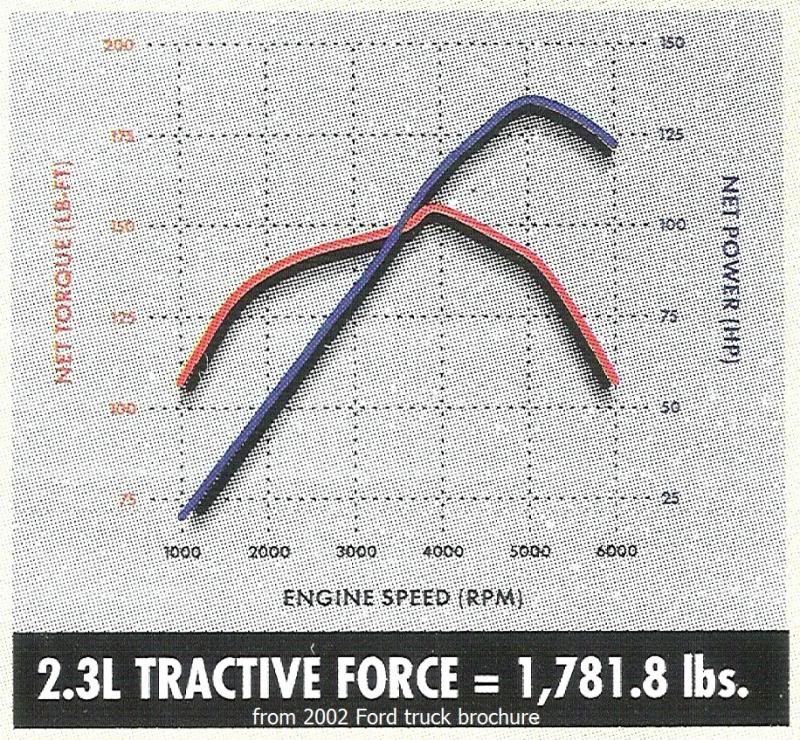zenfiz6 wrote:
D'oh! I'm stoooopid. X-P
The fizix major forgot that one must multiply torque output by the gear ratio to get final torque.
So, Mr. Allpar says (I'm paraphrasing):
"It is left as an exercise for the reader to prove that the force due to torque at the wheels is equal to the engine power divided by the velocity."
Because I've had to survive over a dozen years of such statements thrown at me, if I don't prove it, I'll die.
[fizix lecture]
In the end, Newton's second law tells us that accelerations are caused by forces: F=ma. If we assume the mass is constant for this problem, then acceleration is just some fraction of the available force.
Now, Torque (T) is a force (F) times a lever arm (R). Think of a wrench. If you can't turn the nut with the length wrench you have, what do you do? You get a cheater bar and increase the lever arm, thus increasing torque.
So the force available at the wheels is the torque available at the wheels divided by the radius of the wheels:
F = T_w/R
But the torque available at the wheels is the torque output by the engine
times the gear ratio.
I'll use a little "r" for that:
T_w = T_e*r
Finally, the gear ratio is just the engine RPMs (w_e) divided by the wheel RPMs (w_w). [Why "w"? Because "R" is taken and angular velocity is often given the greek letter "omega," which looks like a "w."]
So, with ALL that said, we get that the force delivered to the car is
F = T_e*w_e/(w_w*R)
One last step: the velocity of the car is the angular velocity of the wheels (w_w) times the radius of the wheels, so the denominator can be reduced to "v."
F = T_e*w_e/v
Finally, we know that power (P) is torque (T_e) times angular velocity (w_e), so we return to
F = P/v
which is what we wanted to prove. Or, as we say in latin: "Quit, Enough Done."
(I've left constants out of the mix, but they're just there to convert metric values to english values and we all know what happened to the Mars probe that NASA lost due to *that* fiasco....)
[/fizix lecture]
So we should be able to simply use the power curve of the engine to determine acceleration and, therefore, should be able to pick the shift point to maintain that acceleration. But it seems to require looking at the power curve somewhat carefully. The acceleration is proportional to the power divided by the velocity. But that means that if the velocity increases, but the power
doesn't increase in proportion to velocity, then the acceleration will suffer.
Looking at
my vehicle's power curve, it appears that it is pretty linear up to about 4300 RPM. This tells me that---for acceleration---I want to shift at about 4300 RPM.
It'd be interesting to look at other curves and see where people shift.
Also, this *still* doesn't explain why 2000RPM doesn't *feel* as nice as 3k.

Homework will be due one week from today.





